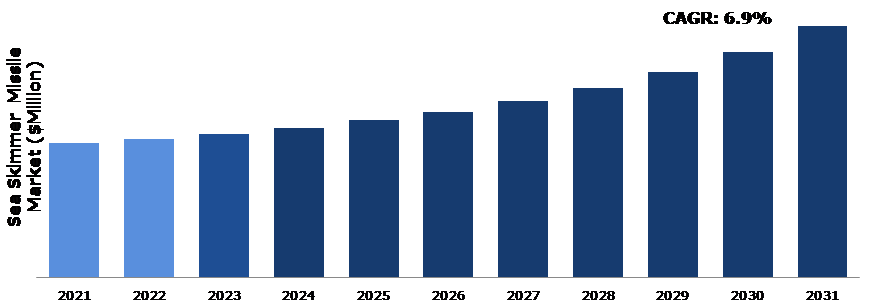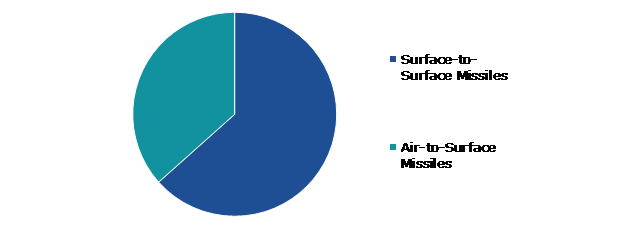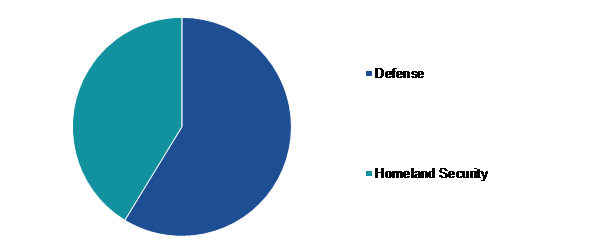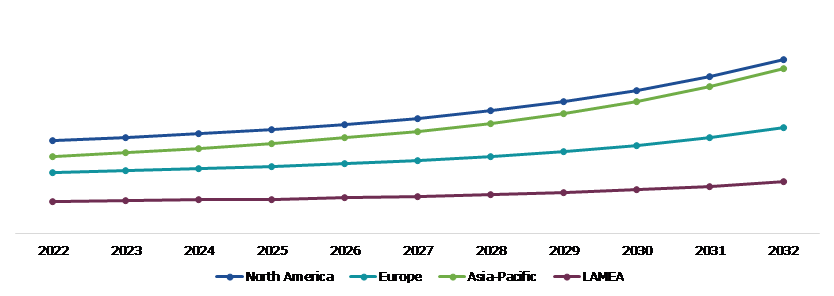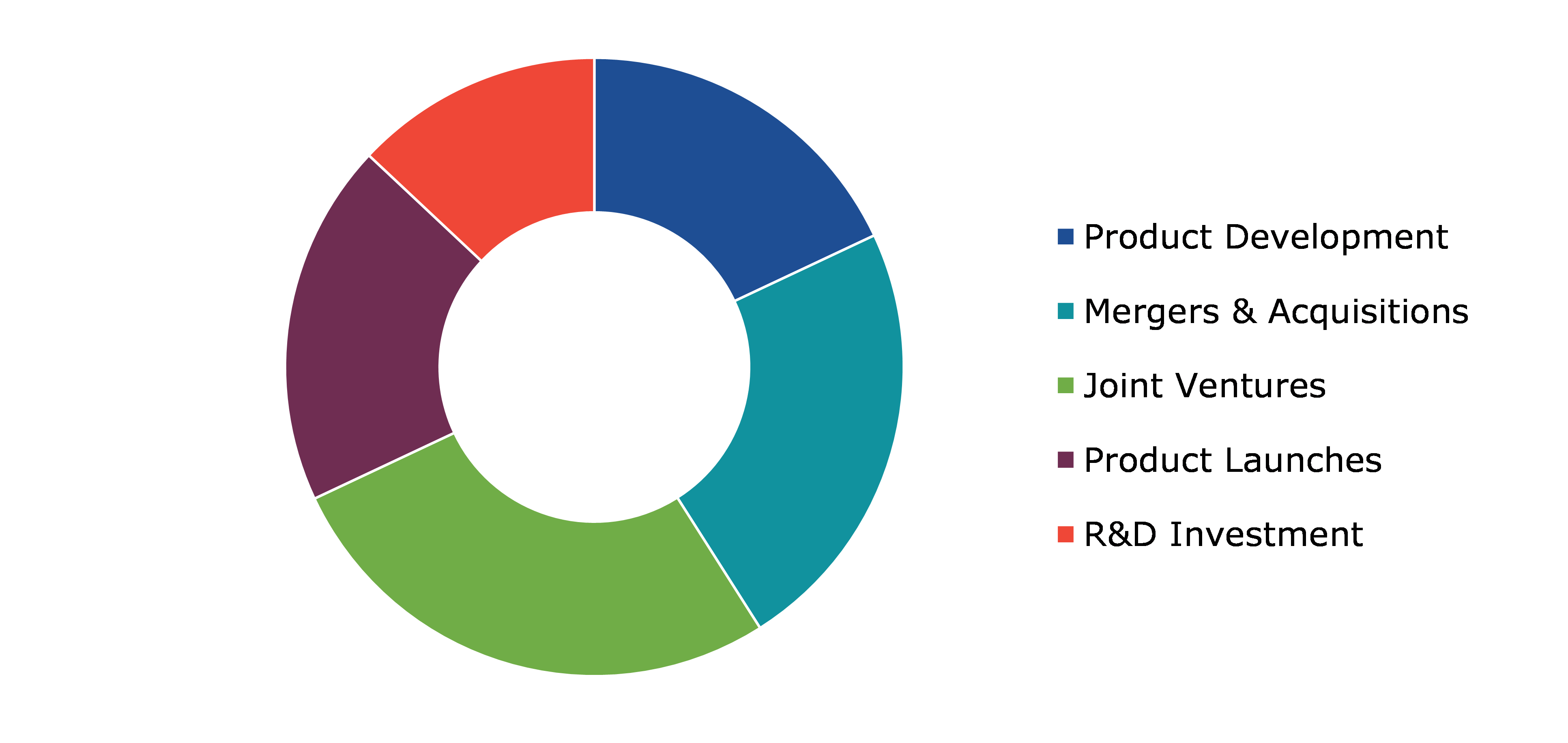Sea Skimmer Missile Market Report
RA09178
Sea Skimmer Missile Market by Type (Surface-to-Surface Missiles and Air-to-Surface Missiles), Application (Defense and Homeland Security), and Region (North America, Europe, Asia-Pacific, and LAMEA): Opportunity Analysis and Industry Forecast, 2023-2032
Sea Skimmer Missile Overview
A sea-skimmer missile, also known as an anti-ship missile or anti-ship cruise missile, is a type of missile that targets and engages navy surface vessels such as ships and boats. To avoid detection by radar and other defense systems, these missiles are designed to fly at low altitudes, flying as close as possible to the sea surface.
Sea-skimmer missile often fly above the sea surface, at time just a few meters above the waves. This allows them to remain below the radar horizon, making it hard to be detected and tracked by ships. To avoid enemy radar and anti-missile defenses, the missiles use modern navigation systems to follow the contours of the sea while maintaining a low profile. Sea-skimmer missiles are designed to travel at high subsonic or supersonic speeds, allowing for fast engagement of targets while limiting the possibility of interception.
Global Sea Skimmer Missile Market Analysis
The global sea skimmer missile market size was $1,461.6 million in 2022 and is predicted to grow with a CAGR of 6.9%, by generating a revenue of $2,741.1 million by 2032.
Source: Research Dive Analysis
COVID-19 Impact on Global Sea Skimmer Missile Market
The COVID-19 pandemic had a significant impact on various industries worldwide, including the defense and missile industry. Many defense manufacturers faced disruptions in their production processes due to lockdowns, travel restrictions, and labor shortages. This led to delays in the delivery of missile systems. Several countries faced economic challenges during the pandemic, which impacted their defense budgets. Therefore, some countries delayed or reduced missile procurement plans to allocate resources to healthcare and economic recovery. The pandemic affected global supply chains, leading to shortages of raw materials and components needed for missile production. This further contributed to delays and increased production costs.
Governments' focus during the pandemic shifted towards health and humanitarian efforts rather than missile development and procurement. Countries with major missile manufacturers-imposed export restrictions on sensitive defense technologies during the pandemic to protect national interests.
Rise in Defense Spending and Increase in Terrorist Activities to Drive the Market Growth
The rise in defense budgets across the globe is a major driver of the sea skimmer missile market growth. As countries attempt to improve their military capabilities, expenditures are allocated to boost their naval forces. To improve their maritime fighting capabilities, naval modernization and procurement projects mostly include expenditures on advanced naval weapons like sea skimmer missiles. The market for sea skimmer missiles is being driven by rising maritime security challenges including piracy, smuggling, and criminal operations in coastal and marine locations. These missiles provide a precise and effective way of neutralizing or deterring threats presented by hostile ships and terrorist activities at sea. Geopolitical tensions and conflicts in various regions around the world increase the demand for advanced naval weaponry. Sea skimmer missiles play a vital role in naval deterrence and defense strategies, especially in areas with major security concerns. All these factors are anticipated to drive the sea skimmer missile market growth in the upcoming years.
Limited Range and Endurance to Restrain the Market Growth
Sea skimmer have limited range and endurance compared to higher-flying missiles in order to maintain low-altitude flight and evade detection. This limitation may limit their operational reach and efficacy when engaging targets at greater distances. Furthermore, the efficiency of sea skimmer missiles is heavily reliant on the maritime environment. Rough seas, bad weather, and intricate coastal topography can all have an impact on their flight performance and accuracy. The employment of sea skimmer missiles in densely populated coastal areas raises legal and ethical questions concerning the possibility of collateral damage and innocent casualties. All these factors are projected to restrain the sea skimmer missile market growth in the upcoming years.
Advancements in Technology to Drive Excellent Opportunities
Advancements in missile guidance system and propulsion technologies & materials offer opportunities for enhanced performance, range, and accuracy of sea skimmer missiles. Furthermore, the integration of artificial intelligence (AI) and machine learning (ML) can open up exciting opportunities for further improvements and increased capabilities. The development of more efficient and powerful propulsion technologies can increase the missile's speed and range. High-speed missiles can cover greater distances in a shorter time, making them harder for naval defenses to intercept and providing them with extended operational reach. In addition, modern sea skimmer missiles can utilize advanced guidance systems, such as inertial navigation systems, global positioning systems (GPS), and terrain-referenced navigation. These systems enable more accurate and precise targeting, allowing the missiles to hit their intended targets with higher reliability. These factors are anticipated to create several growth opportunities in the sea skimmer missile market in the upcoming years.
Global Sea Skimmer Missile Market Share, by Type, 2022
Source: Research Dive Analysis
The surface-to-surface missiles sub-segment accounted for the highest sea skimmer missile market share in 2022. There have been significant advancements in surface-to-surface missile technology. Saab AB's RBS15 Mk3 missile is the current generation of long-range surface-to-surface missile (SSM) weapon. The system is capable of serving as the primary anti-surface weaponry for any sort of naval vessel. The RBS15 Mk3 is also designed to operate in a marine context, including anti-ship combat and land attack missions. Furthermore, the missile has a range of 200 kilometers and can be launched from ships, vehicles, or aircraft. The missile also includes high-precision GPS, which aids in navigation. The missile system is in high demand all across the world. In 2018, Saab AB, a Swedish military contractor, received orders from the German firm Diehl Defense to deliver its RBS15 Mk3 anti-ship missile system for the five new K130 corvettes. The deal is valued at $18.1 million, according to Saab AB. The missile system will be delivered between 2019 and 2024.
Global Sea Skimmer Missile Market Share, by Application, 2022
Source: Research Dive Analysis
The defense sub-segment accounted for the highest sea skimmer missile market share in 2022. Global sea skimmer missiles are used to dissuade their targets, which include warships and other fast-moving boats. When launched from the air or the sea, the missiles can also be used to encounter surface threats from a greater distance. Potential enemies' development and deployment of defense missiles necessitates the development and deployment of viable countermeasures. Countries invest in sea skimmer missiles to preserve a competitive edge and safeguard their naval forces as defense missiles become more modern and capable. The rising threat of piracy, smuggling, and terrorism in maritime domains drives the demand for robust naval defense systems. Sea skimmer missile is a type of naval weapon used to protect coastal areas, important infrastructure, and maritime commerce routes.
Global Sea Skimmer Missile Market Size & Forecast, by Region, 2022-2032 ($Million)
Source: Research Dive Analysis
The North America sea skimmer missile market generated the highest revenue in 2022. Currently, the U.S. Department of Defense is focusing on creating and enhancing naval combat systems due to rising maritime tensions. The U.S. has also produced a number of deadly missiles for sinking warships, the most lethal of which being the AG-84 Harpoon missile. These missiles fly at supersonic speeds for around 150 miles, employing precision-guidance systems to skim over land or water, making detection more difficult. Furthermore, if spotted, the missiles might travel in unpredictable routes, making it more difficult to shoot them down. Therefore, several continuing advances in sea skimmer missiles are projected to lead to its expansion in North America in the future.
Competitive Scenario in the Global Sea Skimmer Missile Market
Investment and agreement are common strategies followed by major market players. In June 2021, Rafael Advanced Defense Systems introduced the Sea Breaker, a 5th generation long-range, self-contained, precision-guided missile system designed to strike high-value maritime and land targets. The mission profile of the missile allows for sea-skimming and terrain-following low-level flying above ground.
Source: Research Dive Analysis
Some of the leading sea skimmer missile market players are Boeing Company, Saab AB, Israel Aerospace Industries Ltd, Orbital ATK Inc, MBDA, BrahMos Aerospace, Kongsberg Gruppen AS, Raytheon Company, Northrop Grumman Corporation, and DRDO.
| Aspect | Particulars |
| Historical Market Estimations | 2020-2021 |
| Base Year for Market Estimation | 2022 |
| Forecast Timeline for Market Projection | 2023-2032 |
| Geographical Scope | North America, Europe, Asia-Pacific, and LAMEA |
| Segmentation by Type |
|
| Segmentation by Application |
|
| Key Companies Profiled |
|
Q1. What is the size of the global sea skimmer missile market?
A. The size of the global sea skimmer missile market was over $1,461.6 million in 2022 and is projected to reach $2,741.1 million by 2032.
Q2. Which are the major companies in the sea skimmer missile market?
A. Boeing Company and Raytheon Company are some of the key players in the global sea skimmer missile market.
Q3. Which region, among others, possesses greater investment opportunities in the future?
A. Asia-Pacific possesses great investment opportunities for investors in the future.
Q4. What will be the growth rate of the Asia-Pacific Sea skimmer missile market?
A. Asia-Pacific Sea skimmer missile market is anticipated to grow at 6.9% CAGR during the forecast period.
Q5. What are the strategies opted by the leading players in this market?
A. Agreement and investment are the two key strategies opted by the operating companies in this market.
Q6. Which companies are investing more on R&D practices?
A. Boeing Company, Saab AB, Israel Aerospace Industries Ltd, Orbital ATK Inc, and MBDA are the companies investing more on R&D activities for developing new products and technologies.
1. Research Methodology
1.1. Desk Research
1.2. Real time insights and validation
1.3. Forecast model
1.4. Assumptions and forecast parameters
1.5. Market size estimation
1.5.1. Top-down approach
1.5.2. Bottom-up approach
2. Report Scope
2.1. Market definition
2.2. Key objectives of the study
2.3. Report overview
2.4. Market segmentation
2.5. Overview of the impact of COVID-19 on global sea skimmer missile market
3. Executive Summary
4. Market Overview
4.1. Introduction
4.2. Growth impact forces
4.2.1. Drivers
4.2.2. Restraints
4.2.3. Opportunities
4.3. Market value chain analysis
4.3.1. List of raw material suppliers
4.3.2. List of manufacturers
4.3.3. List of distributors
4.4. Innovation & sustainability matrices
4.4.1. Technology matrix
4.4.2. Regulatory matrix
4.5. Porter’s five forces analysis
4.5.1. Bargaining power of suppliers
4.5.2. Bargaining power of consumers
4.5.3. Threat of substitutes
4.5.4. Threat of new entrants
4.5.5. Competitive rivalry intensity
4.6. PESTLE analysis
4.6.1. Political
4.6.2. Economical
4.6.3. Social
4.6.4. Technological
4.6.5. Environmental
4.7. Impact of COVID-19 on sea skimmer missile market
4.7.1. Pre-covid market scenario
4.7.2. Post-covid market scenario
5. Sea Skimmer Missile Market Analysis, by Type
5.1. Overview
5.2. Surface-to-Surface Missiles
5.2.1. Definition, key trends, growth factors, and opportunities
5.2.2. Market size analysis, by region, 2022-2032
5.2.3. Market share analysis, by country, 2022-2032
5.3. Air-to-Surface Missiles
5.3.1. Definition, key trends, growth factors, and opportunities
5.3.2. Market size analysis, by region, 2022-2032
5.3.3. Market share analysis, by country, 2022-2032
5.4. Research Dive Exclusive Insights
5.4.1. Market attractiveness
5.4.2. Competition heatmap
6. Sea Skimmer Missile Market Analysis, by Enterprise Size
6.1. Defense
6.1.1. Definition, key trends, growth factors, and opportunities
6.1.2. Market size analysis, by region, 2022-2032
6.1.3. Market share analysis, by country, 2022-2032
6.2. Homeland Security
6.2.1. Definition, key trends, growth factors, and opportunities
6.2.2. Market size analysis, by region, 2022-2032
6.2.3. Market share analysis, by country, 2022-2032
6.3. Research Dive Exclusive Insights
6.3.1. Market attractiveness
6.3.2. Competition heatmap
7. Sea Skimmer Missile Market, by Region
7.1. North America
7.1.1. U.S.
7.1.1.1. Market size analysis, by Type, 2022-2032
7.1.1.2. Market size analysis, by Application, 2022-2032
7.1.2. Canada
7.1.2.1. Market size analysis, by Type, 2022-2032
7.1.2.2. Market size analysis, by Application, 2022-2032
7.1.3. Mexico
7.1.3.1. Market size analysis, by Type, 2022-2032
7.1.3.2. Market size analysis, by Application, 2022-2032
7.1.4. Research Dive Exclusive Insights
7.1.4.1. Market attractiveness
7.1.4.2. Competition heatmap
7.2. Europe
7.2.1. Germany
7.2.1.1. Market size analysis, by Type, 2022-2032
7.2.1.2. Market size analysis, by Application, 2022-2032
7.2.2. UK
7.2.2.1. Market size analysis, by Type, 2022-2032
7.2.2.2. Market size analysis, by Application, 2022-2032
7.2.3. France
7.2.3.1. Market size analysis, by Type, 2022-2032
7.2.3.2. Market size analysis, by Application, 2022-2032
7.2.4. Spain
7.2.4.1. Market size analysis, by Type, 2022-2032
7.2.4.2. Market size analysis, by Application, 2022-2032
7.2.5. Italy
7.2.5.1. Market size analysis, by Type, 2022-2032
7.2.5.2. Market size analysis, by Application, 2022-2032
7.2.6. Rest of Europe
7.2.6.1. Market size analysis, by Type, 2022-2032
7.2.6.2. Market size analysis, by Application, 2022-2032
7.2.7. Research Dive Exclusive Insights
7.2.7.1. Market attractiveness
7.2.7.2. Competition heatmap
7.3. Asia-Pacific
7.3.1. China
7.3.1.1. Market size analysis, by Type, 2022-2032
7.3.1.2. Market size analysis, by Application, 2022-2032
7.3.2. Japan
7.3.2.1. Market size analysis, by Type, 2022-2032
7.3.2.2. Market size analysis, by Application, 2022-2032
7.3.3. India
7.3.3.1. Market size analysis, by Type, 2022-2032
7.3.3.2. Market size analysis, by Application, 2022-2032
7.3.4. Australia
7.3.4.1. Market size analysis, by Type, 2022-2032
7.3.4.2. Market size analysis, by Application, 2022-2032
7.3.5. South Korea
7.3.5.1. Market size analysis, by Type, 2022-2032
7.3.5.2. Market size analysis, by Application, 2022-2032
7.3.6. Rest of Asia-Pacific
7.3.6.1. Market size analysis, by Type, 2022-2032
7.3.6.2. Market size analysis, by Application, 2022-2032
7.3.7. Research Dive Exclusive Insights
7.3.7.1. Market attractiveness
7.3.7.2. Competition heatmap
7.4. LAMEA
7.4.1. Brazil
7.4.1.1. Market size analysis, by Type, 2022-2032
7.4.1.2. Market size analysis, by Application, 2022-2032
7.4.2. Saudi Arabia
7.4.2.1. Market size analysis, by Type, 2022-2032
7.4.2.2. Market size analysis, by Application, 2022-2032
7.4.3. UAE
7.4.3.1. Market size analysis, by Type, 2022-2032
7.4.3.2. Market size analysis, by Application, 2022-2032
7.4.4. South Africa
7.4.4.1. Market size analysis, by Type, 2022-2032
7.4.4.2. Market size analysis, by Application, 2022-2032
7.4.5. Rest of LAMEA
7.4.5.1. Market size analysis, by Type, 2022-2032
7.4.5.2. Market size analysis, by Application, 2022-2032
7.4.6. Research Dive Exclusive Insights
7.4.6.1. Market attractiveness
7.4.6.2. Competition heatmap
8. Competitive Landscape
8.1. Top winning strategies, 2022
8.1.1. By strategy
8.1.2. By year
8.2. Strategic overview
8.3. Market share analysis, 2022
9. Company Profiles
9.1. Boeing Company
9.1.1. Overview
9.1.2. Business segments
9.1.3. Product portfolio
9.1.4. Financial performance
9.1.5. Recent developments
9.1.6. SWOT analysis
9.2. Saab AB
9.2.1. Overview
9.2.2. Business segments
9.2.3. Product portfolio
9.2.4. Financial performance
9.2.5. Recent developments
9.2.6. SWOT analysis
9.3. Israel Aerospace Industries Ltd
9.3.1. Overview
9.3.2. Business segments
9.3.3. Product portfolio
9.3.4. Financial performance
9.3.5. Recent developments
9.3.6. SWOT analysis
9.4. Orbital ATK Inc
9.4.1. Overview
9.4.2. Business segments
9.4.3. Product portfolio
9.4.4. Financial performance
9.4.5. Recent developments
9.4.6. SWOT analysis
9.5. MBDA
9.5.1. Overview
9.5.2. Business segments
9.5.3. Product portfolio
9.5.4. Financial performance
9.5.5. Recent developments
9.5.6. SWOT analysis
9.6. BrahMos Aerospace
9.6.1. Overview
9.6.2. Business segments
9.6.3. Product portfolio
9.6.4. Financial performance
9.6.5. Recent developments
9.6.6. SWOT analysis
9.7. Kongsberg Gruppen AS
9.7.1. Overview
9.7.2. Business segments
9.7.3. Product portfolio
9.7.4. Financial performance
9.7.5. Recent developments
9.7.6. SWOT analysis
9.8. Raytheon Company
9.8.1. Overview
9.8.2. Business segments
9.8.3. Product portfolio
9.8.4. Financial performance
9.8.5. Recent developments
9.8.6. SWOT analysis
9.9. Northrop Grumman Corporation
9.9.1. Overview
9.9.2. Business segments
9.9.3. Product portfolio
9.9.4. Financial performance
9.9.5. Recent developments
9.9.6. SWOT analysis
9.10. DRDO
9.10.1. Overview
9.10.2. Business segments
9.10.3. Product portfolio
9.10.4. Financial performance
9.10.5. Recent developments
9.10.6. SWOT analysis
Personalize this research
- Triangulate with your own data
- Request your format and definition
- Get a deeper dive on a specific application, geography, customer or competitor
- + 1-888-961-4454 Toll - Free
- support@researchdive.com

